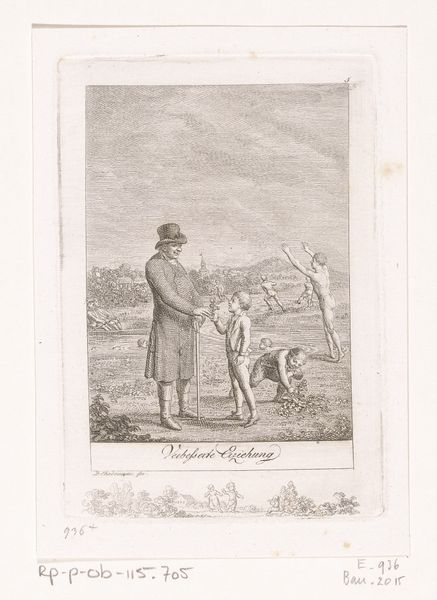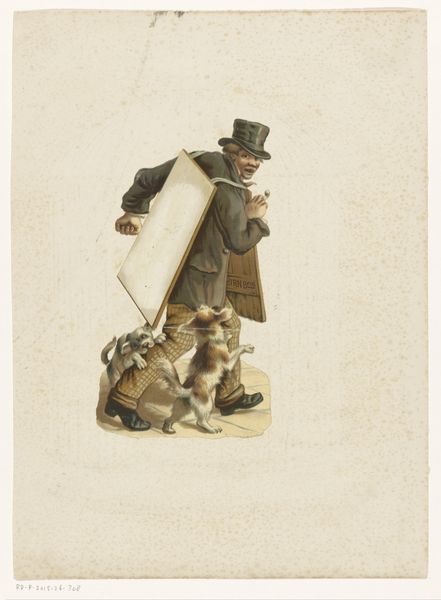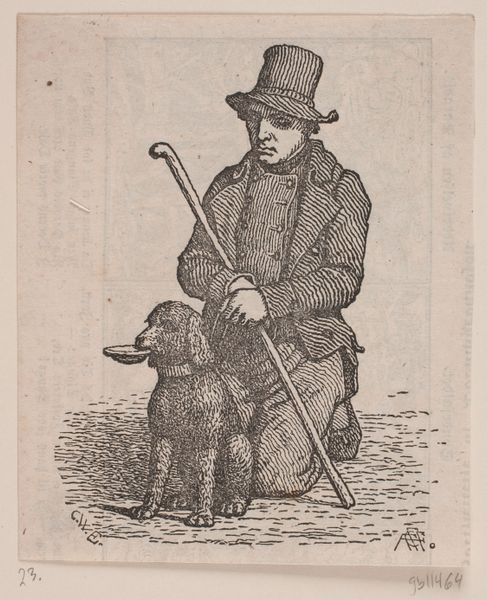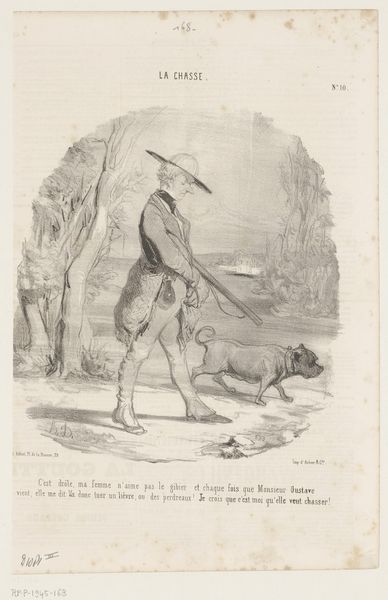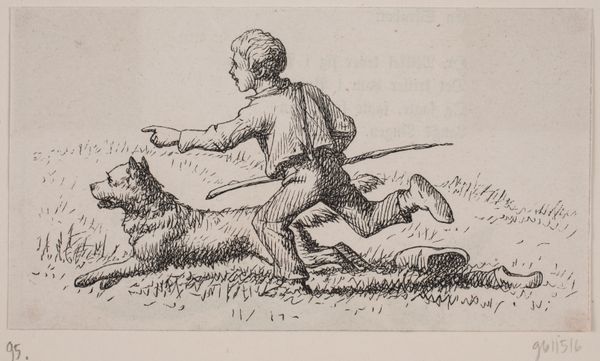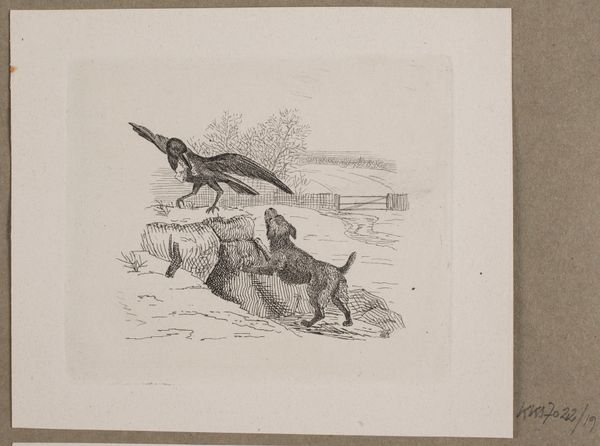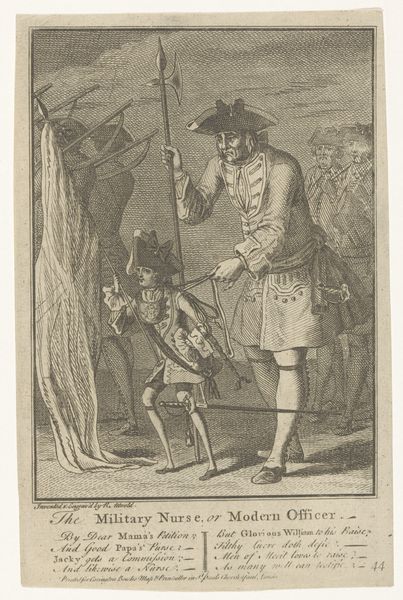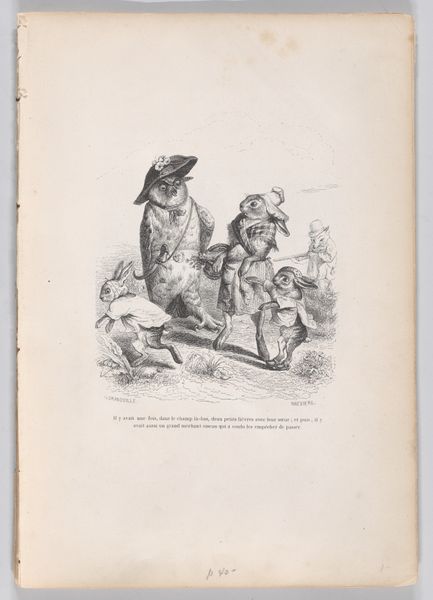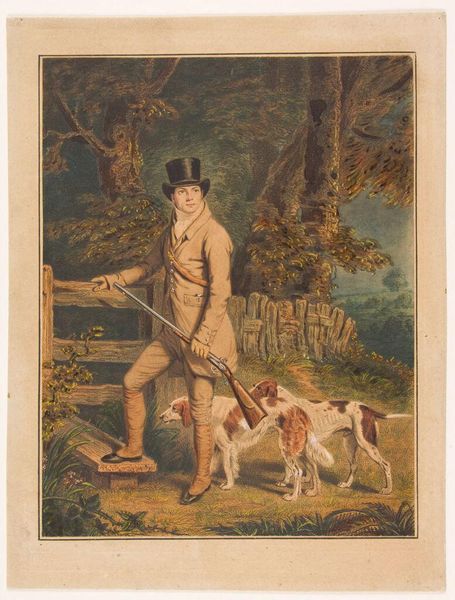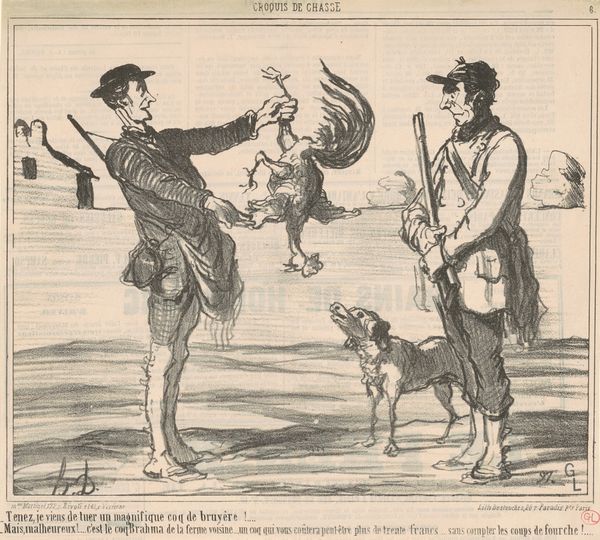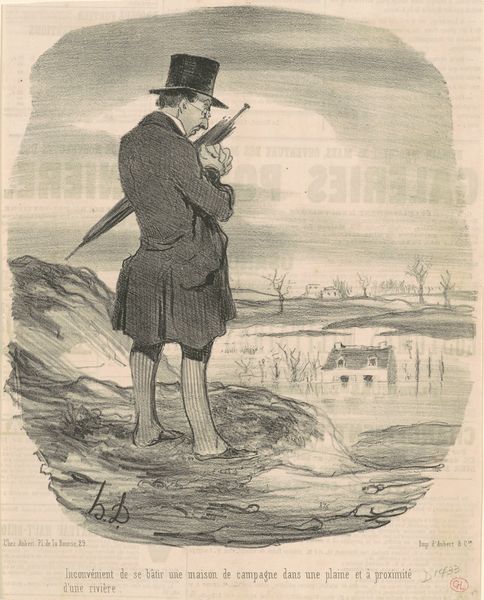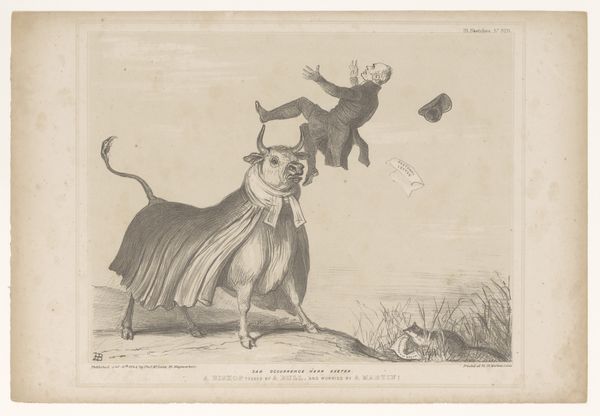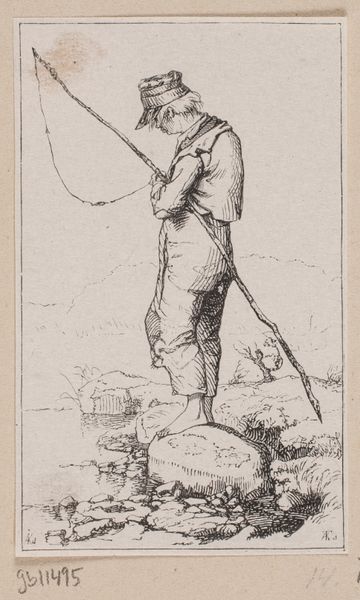
drawing, print, engraving
#
portrait
#
drawing
# print
#
caricature
#
dog
#
men
#
genre-painting
#
engraving
Dimensions: plate: 6 x 4 3/16 in. (15.3 x 10.6 cm) sheet: 8 13/16 x 5 7/16 in. (22.4 x 13.8 cm)
Copyright: Public Domain
Curator: This intriguing print, dating from 1771, is titled "A Macaroni" and is attributed to Edward Topham. It’s an engraving and offers a glimpse into a very specific slice of 18th-century society. What's your immediate reaction to it? Editor: My initial impression is… satirical. The figure's exaggerated posture, the almost foppish details, suggest a mockery of a certain type of man. There's a definite bite to it. Curator: Absolutely. The term "macaroni," in this period, referred to English men who adopted extravagant Continental fashions and airs. Think of it as a kind of early dandy. Topham’s choice of caricature immediately signals a critique of social posturing. Look at the ridiculously oversized club of hair and the absurdly impractical buckles on his shoes. Editor: And the small dog leaping at him seems to echo the figure's affected stance. Dogs, traditionally symbols of loyalty, become absurd mimicry in such portraits. What I wonder about is the choice of the word Macaroni for the title. The inscription at the bottom feels biting as well. Is the implication that the "Macaroni" is part of a group? Curator: Yes, the text clearly situates this figure as part of a "fribbling, idle, prating Tribe" that exists solely for themselves. The political implication, perhaps, is of a class disconnected from the needs and labor of the rest of the country. As engravings often circulated widely, how would they have been received by a general audience? Editor: As subversive cultural commentary I believe. These kinds of prints helped to shape public opinion, reinforcing existing class tensions, perhaps even fueling social resentments. In doing so, the image becomes a marker for broader cultural anxiety and shifting ideals of English masculinity. The "macaroni" threatened an established understanding of manliness. Curator: Indeed. I hadn't considered how much it was intended to be a politically mobilizing force that made use of symbolic visual references. Thank you! Editor: Thank you for bringing attention to how these forms reinforced divisions and anxieties within England, creating enduring symbolic weight.
Comments
No comments
Be the first to comment and join the conversation on the ultimate creative platform.
